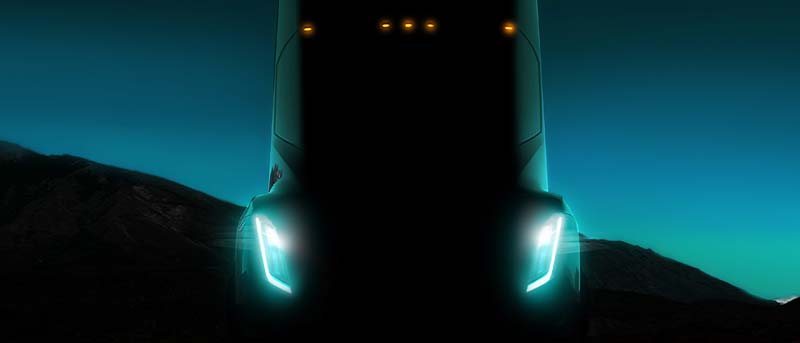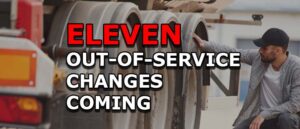How Fleets Can Easily Remove Crash Preventability Off CSA Scores
CNS can help with our Roadside & Incident Report Management service where a team of DOT Compliance Specialists will assess the Department of Transportation safety records
We are a team of DOT Compliance and Licensing Professionals helping trucking and transportation companies remain safe, compliant, and profitable.
CNS or Compliance Navigation Specialists is DOT Compliance company that assists trucking and transportation companies remain DOT Compliant. We are part of a network of companies, CNS Companies, specializing in services related to the transportation, manufacturing, construction, service, education and medical industries.

A full-scale DOT Compliance Program managing a long haul carrier’s safety, compliance, licensing and more.
Learn more >>>
A DOT Compliance Program that keeps motor carriers compliant with the 6 Basic DOT Regulations required of all carriers.
Learn more >>>
Our Short-Haul/Construction Program is a full-scale program designed for private carriers that do not haul for-hire.
Learn more >>>
Our most comprehensive DOT Compliance Program, operating as your company’s off-site Safety Director or assisting your current safety personnel.
Learn more >>>
Our Non-CDL Program is a full-scale program managing safety, compliance, licensing and more for moving companies, couriers, landscapers, or any company subject to DOT regulations and does not employ CDL drivers.
Learn more >>>
Our DOT Audit Services cover a number of different types of DOT Audits that new and existing carriers will be subject to.
Our DOT Driver Services help trucking companies and carriers to stay compliant as they grow and hire more drivers.
Our DOT Vehicle Services focus on ensuring your vehicles are compliant with DOT Regulations, which is just as important as your drivers.
Our DOT Services for Special Carriers focus on companies outside of the typical motor carrier, like HAZMAT, Passenger and Bus Carriers.
CNS is part of a group of companies that offer other necessary services for the trucking and transportation industry, such as Commercial Trucking Insurance, CDL Training, Online Training Course, and even Healthcare.
Our DOT Licensing Services will cover you whether you are an existing company or just starting a trucking company. Our DOT Licensing Specialists can help you get up and running and in days with your DOT number, MC Authority, EIN, UCR, IFTA, 2290 HVUT, Fuel Taxes and can even set you up to get your Commercial Driver's License (CDL) with CNS Driver Training Center.
Our DOT Licensing Specialists will help you with every aspect of starting a trucking company. All you need to do is choose a name for your trucking company.
You will need to ensure your DOT Number, MC Authority, Vehicle Registration, etc. is all set up properly when you start your trucking business.
Our Licensing Specialists can help with all aspects of filing and renewing licenses, fuel taxes, etc.
CNS is part of a group of companies that offer other necessary services for the trucking and transportation industry, such as Commercial Trucking Insurance, CDL Training, Online Training Course, and even Healthcare.
CNS can help with our Roadside & Incident Report Management service where a team of DOT Compliance Specialists will assess the Department of Transportation safety records
CNS or Compliance Navigation Specialists is DOT Compliance company that assists trucking and transportation companies remain DOT Compliant. We are part of a network of companies, CNS Companies, specializing in services related to the transportation, manufacturing, construction, service, education and medical industries.
CNS Companies is a network of companies specializing in services related to the transportation, manufacturing, construction, service, education and medical industries. Our DOT Compliance division is handled by Compliance Navigation Specialists, CNS Insurance handles Commercial Truck Insurance, CDL training is managed by the CNS Driver Training Center and healthcare is managed by CNS Occupational Medicine.
We are a team of DOT Compliance and Licensing Professionals helping trucking and transportation companies remain safe, compliant, and profitable.
CNS or Compliance Navigation Specialists is DOT Compliance company that assists trucking and transportation companies remain DOT Compliant. We are part of a network of companies, CNS Companies, specializing in services related to the transportation, manufacturing, construction, service, education and medical industries.

A full-scale DOT Compliance Program managing a long haul carrier’s safety, compliance, licensing and more.
Learn more >>>
A DOT Compliance Program that keeps motor carriers compliant with the 6 Basic DOT Regulations required of all carriers.
Learn more >>>
Our Short-Haul/Construction Program is a full-scale program designed for private carriers that do not haul for-hire.
Learn more >>>
Our most comprehensive DOT Compliance Program, operating as your company’s off-site Safety Director or assisting your current safety personnel.
Learn more >>>
Our Non-CDL Program is a full-scale program managing safety, compliance, licensing and more for moving companies, couriers, landscapers, or any company subject to DOT regulations and does not employ CDL drivers.
Learn more >>>
Our DOT Audit Services cover a number of different types of DOT Audits that new and existing carriers will be subject to.
Our DOT Driver Services help trucking companies and carriers to stay compliant as they grow and hire more drivers.
Our DOT Vehicle Services focus on ensuring your vehicles are compliant with DOT Regulations, which is just as important as your drivers.
Our DOT Services for Special Carriers focus on companies outside of the typical motor carrier, like HAZMAT, Passenger and Bus Carriers.
CNS is part of a group of companies that offer other necessary services for the trucking and transportation industry, such as Commercial Trucking Insurance, CDL Training, Online Training Course, and even Healthcare.
Our DOT Licensing Services will cover you whether you are an existing company or just starting a trucking company. Our DOT Licensing Specialists can help you get up and running and in days with your DOT number, MC Authority, EIN, UCR, IFTA, 2290 HVUT, Fuel Taxes and can even set you up to get your Commercial Driver's License (CDL) with CNS Driver Training Center.
Our DOT Licensing Specialists will help you with every aspect of starting a trucking company. All you need to do is choose a name for your trucking company.
You will need to ensure your DOT Number, MC Authority, Vehicle Registration, etc. is all set up properly when you start your trucking business.
Our Licensing Specialists can help with all aspects of filing and renewing licenses, fuel taxes, etc.
CNS is part of a group of companies that offer other necessary services for the trucking and transportation industry, such as Commercial Trucking Insurance, CDL Training, Online Training Course, and even Healthcare.
CNS can help with our Roadside & Incident Report Management service where a team of DOT Compliance Specialists will assess the Department of Transportation safety records
CNS or Compliance Navigation Specialists is DOT Compliance company that assists trucking and transportation companies remain DOT Compliant. We are part of a network of companies, CNS Companies, specializing in services related to the transportation, manufacturing, construction, service, education and medical industries.
CNS Companies is a network of companies specializing in services related to the transportation, manufacturing, construction, service, education and medical industries. Our DOT Compliance division is handled by Compliance Navigation Specialists, CNS Insurance handles Commercial Truck Insurance, CDL training is managed by the CNS Driver Training Center and healthcare is managed by CNS Occupational Medicine.

2020 has been a year of validating the future of electronic vehicles and testing of autonomous long-haul driving.
Electronic and autonomous trucking will be here quicker than you think. Don’t worry, truckers will not be effected tomorrow, but it is definitely something to think about over the next decade or two.
Last week, Tesla held their battery day event revealing new battery technology and plans to dramatically increase battery production for electric vehicles (EVs), including the Tesla Semi that will be in production after Gigafactory Texas is built.
For those who were not excited about Tesla Battery Day, then you probably did not understand it.
Tesla, an automotive and energy company currently valued at double that of Texas’ oil company Exxon Mobile, showed a big step in the right direction for EVs and autonomous driving, and not just for Tesla.
The California Governor just signed an order that will ban the sales of new gasoline cars by 2035 in the state after previously announcing California fleets to phase out sales of new diesel trucks and buses by 2045. The California Air Resources Board (CARB) estimates that 2 million diesel trucks cause 70% of smog-causing pollution in the state.
Furthermore, autonomous trucking company–Locomation—will be equipping their platooning technology into 1,120 of Wilson Logistics trucks as early as 2022.
For the trucking industry, let us break down what technology is available now and what may be available by the end of the decade.
Tesla confirmed recently that the Tesla Semi will be produced at Gigafactory Texas alongside Cybertruck, Model 3, Model Y, and battery production.
The current timeline for “first completion” of the Austin, Texas factory is planned for May 2021, which has been under development for almost two months. The Tesla Semi is currently planned to be in production by the end of 2021 in Texas and Gigafactory Nevada will support Tesla Semi production.
When Tesla first announced the Class 8 heavy-duty truck, they said it would have a 500 mile (805 km) range on a full charge and would be able to run for 400 miles (640 km) after an 80% charge in 30 minutes using a “Tesla Megacharger” charging station.
CEO Elon Musk also said that the Tesla Semi would come standard with Tesla Autopilot that allows semi-autonomous driving on highways.
Tesla’s head of the Tesla Semi program, Jerome Guillen, said back in June that they currently “have a few trucks that keep driving around and that can deliver cars. But we’re going to accelerate that. I want to be clear that the first few units, we will use ourselves, to carry our own freight, probably mostly between Fremont and Reno, which is a fantastic test route. We’re going to prove that we have very good reliability. So far, the early units do have it, but we’ll do that at a larger scale. And we have also promised some early units to some long-term, very patient, and supportive customers, and we’ll do that.”
The bottleneck slowing down the Tesla Semi program has been battery cell supply, but he mentioned that Tesla expects to have more cells to expand the lineup next year.
Tesla has been taking reservations for the electric truck and said that the production versions will have 300-mile and 500+ mile range versions for $150,000 and $180,000, respectively. Walmart just announced that they will more than triple their order of Tesla Semis to 130 as a part of a serious sustainability push.
With the new batteries to be produced in Gigafactory Texas, Tesla forecasts a 54% boost in range along with a 56% reduction in cost per kilowatt hour, given 18 months to three years to see the impact.
For the Tesla Semi, a 54% boost in range would expand reach to 462 and 770 miles respectively.
According to CCJ, Mike Roeth, executive director at the North American Council for Freight Efficiency (NACFE), said that while range improvements will help win over fleets, it’s simply too early to tell how Semi might benefit and that “the industry has reached some consensus that electric trucks make complete sense in about 300 miles of range.”
“Range is a crucial determinate for battery electric trucks replacing engines, specifically diesels in trucks,” Roeth said. “These improvements are impressive and will help accelerate adoption. But the 300 and 500 mile range announcements from 2017 have yet to be validated as Tesla has not delivered Semis to customers or shared third party verified data.”
There is much that still needs to be considered before mass adoption of electric fleet vehicles like the Tesla Semi. This includes dozens to hundreds of megacharging stations to be built at trucking terminals and over the road chargers meant for truckers, showing they can handle consistent next day maintenance repairs if the truck breaks down, etc.
However, US electric truck sales are now expected to increase to over 54,000 units by 2025.
Hyliion: There are already 20 trucks operating with Hyliion’s electric powertrains, built via ventures with Dana Corp. and Volvo. The e-axle could be retrofitted onto old trucks, or built into new ones. The benefits were clear—the e-axle would provide a helping hand, adding power and torque that allowed the diesel block to work more efficiently, improving fuel mileage and lowering emissions. Naturally, the system also captures power via regenerative braking, which, given the mass of a semitruck, can be substantial. Batteries must be able to absorb 5 kilowatt-hours of power from braking on a steep hill, then turn around and feed that power back to the drivetrain during acceleration.
Dailmer: Daimler/Freightliner’sheavy-duty eCascadia was premiered in Portland, Oregon in June 2018 and is currently undergoing practical tests with customers in the United States in a variety of applications including regional and local distribution, food distribution and parcel delivery.
The eCascadia has a target range for series production of up to 250 miles (compared to Tesla Semi’s 300 and 500+ model range). Production of the eCascadia is scheduled to start in mid-2022.
Nikola: If you are wondering about the Nikola semi, do not hold your breath. The company is facing incredible scrutiny after a scathing report by short-seller firm Hindenburg Research that accused the company of fraud.
Unlike Tesla Semi, the Nikola semi displayed in their video announcement was a “pusher” going downhill, not producing its own power. Additionally, there are no hydrogen stations being built across the U.S, no vehicle production in the works as of yet, and the company is facing a big legal battle after their founder recently “stepped away” from the company.
The race is on for fully autonomous driving to become reality. The aim is Level 4 autonomy, meaning full automation without human intervention under “defined driving conditions and applied in all markets.”
For fleets to realize economic gains from autonomy requires a new set of processes and systems designed to assure safety and provide a positive return on investment. Over time, fleets would expect to see more balanced routes and reduction in mixed traffic and commuter congestion. If the technology is nailed, then peak hours of travel can be circumnavigated to provide greater assurance on cargo arrival times, partnered with improved safety of fellow road-users.
For long-haul truckers, many hope the slow diffusion of autonomous technology should leave plenty of time for operations optimization and new opportunities rising across the supply chain as traditional driving transitions.
Let’s take a look at several companies striving for autonomous driving.
Daimler and Torc Robotics: In 2019, Daimler bought autonomous vehicle firm Torc Robotics, acquiring “advanced, road-ready technology” for level 4 autonomous driving while Plus.AI conducted the first real-world commercial freight delivery by a self-driving truck, carrying 40,000 pounds of Land O’Lakes butter in a three-day trip across the United States.
Waymo: Part of Google parent Alphabet, Waymo has done driving tests in Georgia, Michigan, California, and Arizona. Their testing still had a human operator behind the wheel if anything goes wrong. They have 40 autonomous trucks right now and hope to have self-driving trucks operate between Los Angeles, California and Jacksonville, Florida by 2023 or 2024.
Kodiak Robotics: Kodiak is backed by some big names and is working to bolster the opportunity by using the driverless technology on the more predictable and less dynamic highways. They are focusing on autonomous vehicles that are used between a drop-off or pick-up sites that can include more technical challenges.
TuSimple: An autonomous driving technology start-up focused on heavy-duty commercial trucks, TuSimple currently operates in China, San Diego, CA and Tucson, AZ. They operate 40 self-driving truck fleet in the United States that are used for transporting freight between Arizona and Texas. The trucks have accrued more than 1 million safe miles so far and run routes for UPS and McLane Co. They recently joined with Traton’s Scania trucks to roll out autonomous vehicle operations to Europe with TuSimple’s Level 4 automation system that can drive without any human intervention.
Locomation: A company spun out of a prestigious university robotics lab, Locomation will equip 1,120 Wilson Logistics trucks with their convoy technology, which enables driverless trucks to follow a lead-truck piloted by a human, combining the best of autonomous technology with reliable human-in-the-loop driving protocols. The first units will be delivered in early 2022.
This agreement followed a successful pilot program involving two Locomation trucks hauling Wilson Logistics trailers and freight on a 420 mile-long route from Portland, OR to Nampa, ID. As opposed to truly driverless technologies pursued by Waymo, Embark, TuSimple, and others, Locomation always requires at least one driver to be alert and in control.
Tesla: Tesla will likely release a new fully functional version of its Full Self Driving package to private beta testers in Fall 2020 after undergoing a “fundamental rewrite” of its software that boasts over a million cars with full self-driving computer and hardware that has been collecting tons of data.
Tesla has released various components that will eventually equal the sum of Full Self Driving, including Smart Summon (slow speed in carparks), Navigate on Autopilot (high speed on freeways) and most recently, stop and go through traffic lights. The full self-driving technology will be built in with Tesla Semi that is to be in production in late 2021.
As we mentioned at the beginning of this article, fully autonomous trucking will be here faster than you think.

If your lights aren’t on at night, but they work, that’s no longer an OOS violation, though it’s still a violation of state laws to

Article written by Tim Miller, CNS How stressful is your job? Do you think about it while off the clock? Does it make you anxious

While checking for the presence of alcohol or controlled substances during an inspection, inspectors will: Observe the driver for signs of alcohol or controlled substance;

Many companies, including motor carriers, are now required to report information to FinCEN about the individuals who own or control them, or face fines. Here’s
Our DOT Compliance Programs ensure it is your top priority and keeps your business running.
Receive the latest transportation and trucking industry information about FMCSA and DOT Audits, Regulations, etc.

If your lights aren’t on at night, but they work, that’s no longer an OOS violation, though it’s still a violation of state laws to

Article written by Tim Miller, CNS How stressful is your job? Do you think about it while off the clock? Does it make you anxious

While checking for the presence of alcohol or controlled substances during an inspection, inspectors will: Observe the driver for signs of alcohol or controlled substance;
Join our monthly newsletter and stay up-to-date on trucking industry news and receive important compliance and licensing tips.
Join our monthly newsletter and stay up-to-date on trucking industry news and receive important compliance and licensing tips.